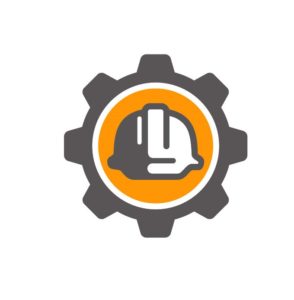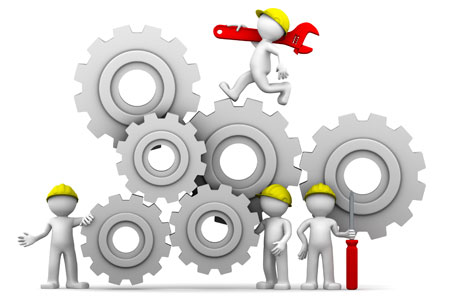
Process/Workflow/Value
Process is a sequence of tasks; Process is something that exists naturally and flows intuitively.
Workflow is a way to make this sequence more productive and efficient; A workflow is analyzed, planned, modeled, and automated consciously and with well-defined purposes.
Value is based on one’s consideration of worth, excellence, usefulness, and/or importance. Value is something that is useful.
So, a clear workflow makes a process more efficient and creates value.
 Because projects are typically short term (i.e., less than 1 year), H&S teams are brought together from multiple levels and companies to administer the PSSP. The individuals are tasked to ensure that the required elements of a safety program are implemented, monitored and reported on. From onboarding to final reports, all the documentation must be created, distributed throughout the project, maintained and compiled as the project evolves. This requires a process for each of these items and is often overlooked until it becomes a reporting train wreck.
Because projects are typically short term (i.e., less than 1 year), H&S teams are brought together from multiple levels and companies to administer the PSSP. The individuals are tasked to ensure that the required elements of a safety program are implemented, monitored and reported on. From onboarding to final reports, all the documentation must be created, distributed throughout the project, maintained and compiled as the project evolves. This requires a process for each of these items and is often overlooked until it becomes a reporting train wreck.
Let’s look at a few scenarios and processes that are typically found on projects.
Scenario one:
A subcontractor is brought into a project that uses a paper-based system for its H&S program. While all the required documentation types are present, the contractor struggles to complete the required forms properly and submit them on time. The forms are often missing required information, illegible or incorrect.
The H&S representative is tasked with assembling the forms, reviewing, compiling and entering the results into the system that has been set up for compiling all the H&S documentation. This may be someone internal to the subcontractor or a prime contractor H&S coordinator.
Process: Manual distribution, completion, compiling once completed, posting of summary.
Workflow: Manual process throughout.
Value: 1/5. Minimal due to process requiring manual input throughout.
Scenario two:
A subcontractor on a project uses a cloud-based H&S platform. All of the completed forms are available to the H&S coordinator through download at any time once the tablets are synced at day’s end. There are several forms that must remain paper-based including FLHAs, due to the requirement to have them on each worker and Equipment Pre-Trip inspections, which have to be available for review on site. Both types are collected by the supervisor daily and submitted. The digital platform the subcontractor uses compiles and produces reports for submission but is not used by the prime contractor.
Process: Electronic distribution, compiling and reporting.
Workflow: Automated distribution and compiling. Siloed with subcontractor.
 Value: 3/5. Although this process for gathering and compiling is efficient, the information is siloed with the subcontractor and the prime doesn’t have a system that allows the information to merge into the project’s data without reconfiguration.
Value: 3/5. Although this process for gathering and compiling is efficient, the information is siloed with the subcontractor and the prime doesn’t have a system that allows the information to merge into the project’s data without reconfiguration.
Here are the issues facing the prime when managing an HSMS:
- Paper based systems within the project are labor intensive and error prone.
- Cloud-based systems used by the subcontractor group are great tools for the individual programs but create silos of information when the prime contractor doesn’t have the same platform, so results have to be manually reconfigured in acceptable formats for entry into the latter’s system. With multiple contractors on the project, this is quickly magnified, with each having their own platform and the prime contractor unable to accommodate them.
So, how do we get to a 5/5?
By establishing a digital system that is utilized across all levels of the project.
Here are the steps:
- Move any “paper-based system” onto a cloud-based platform and a tablet for each field supervisor/foreman. You might be saying “I know that’ll never work because…”, Good news! I’ve implemented these enough times to prove that it’s doable and the benefits far outweigh the minimal costs. Computer literacy isn’t an issue, cell service isn’t an issue, losing the completed forms isn’t an issue, cost isn’t an issue. All of these are excuses to avoid converting your program to digital.
- Place a simple interface that accepts the reported data from any subcontractor currently utilizing a cloud-based system internally for their H&S system and reconfigure it into a format that is common across all project contractors.
- Once we have all the information coming into the interface, we can now assemble and report any way we like. We are now able to set parameters (Goals), measure our progress (Monitoring) and set alerts and notifications, based on results and trends, (Communication) for the overall H&S management of the project.
In summary, projects with poor processes within the HSMS face an uphill battle that is expensive and frustrating. By creating and implementing a common cloud-based interface, the project has a tool that is specific to its requirements, enables participation of all subcontractors, and allows the prime contractor to retrieve required information that needs to be shared with stakeholders.



0 Comments